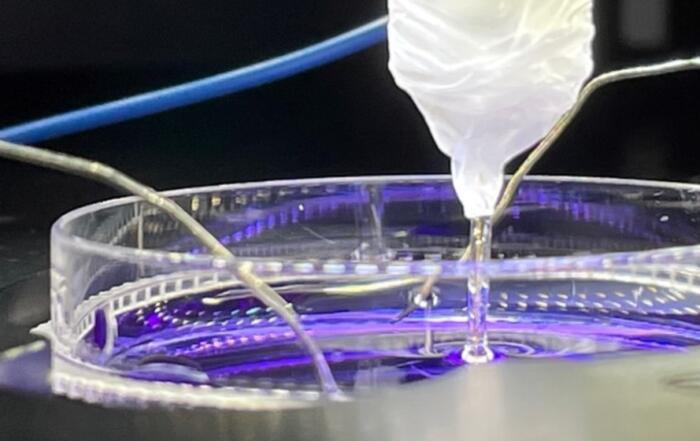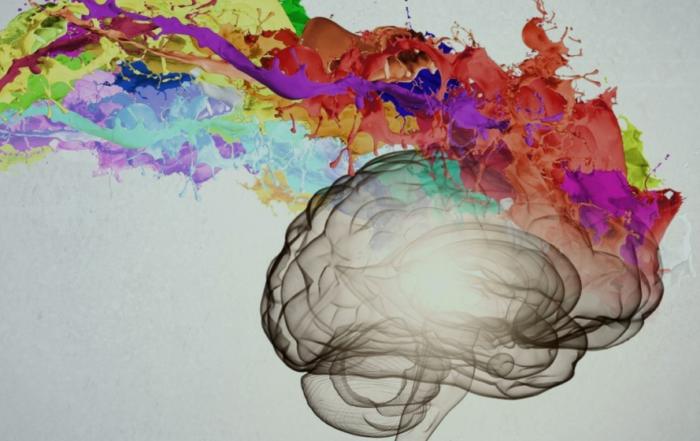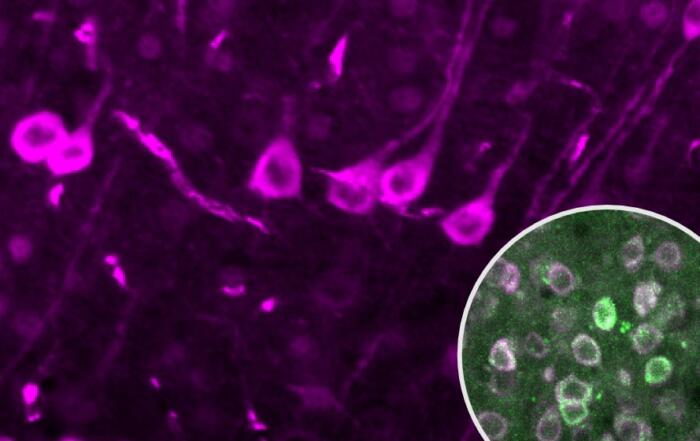In this webinar, Professor Raül Andero Galí presents findings from a recent study on sex-dependent differences in fear memory consolidation in mice.
Highlights
- An overview of fear, anxiety, and related disorders
- Effects of neurokinin-3 receptor antagonism on fear memory in mice
- Sex differences in the effect of drugs on memory
- How osanetant interacts with the estrous cycle in mice
- Molecular mechanisms of memory formation in male and female mice
Webinar Summary
One of Professor Andero’s goals is to find treatments for post-traumatic stress disorder (PTSD) or prevent it entirely. The Andero laboratory focuses on the study of fear, a reaction to something that might cause harm, rather than anxiety, which involves feeling afraid of something that may or may not happen. Although the neurocircuitries of fear and anxiety are different, they overlap in some aspects.
“Why is my laboratory interested in fear? … Fear-related disorders are the core of certain psychiatric disorders described in DSM-5. … By understanding the molecular mechanisms of fear, normal fear regulation, and pathological fear regulation, we can treat many brain disorders.”
Women are approximately twice as likely to suffer from a fear-related disorder (e.g., PTSD, panic disorder, obsessive-compulsive disorder, etc.) than men. However, the cause of this difference is largely unknown. Many explanations point at biological or genetic factors that may cause women to be more susceptible to these disorders, but Professor Andero suggests environmental factors could also contribute. For example, a greater exposure to stress may lead to a higher likelihood of developing a fear-related disorder.
Fear is helpful in memory studies since the underlying mechanisms are similar across species; Pavlovian fear conditioning aids in the understanding of what happens in laboratory animals, which can be translated to humans. While many areas of the brain are involved in fear modulation, the Andero laboratory focuses on the amygdala, specifically the neuropeptide tachykinin-2 (Tac2).
“The reason we’re focusing on Tac2 in the centromedial amygdala is because … we found in 2014 that the Tac2 neurons were necessary and sufficient for the formation of fear memory in male [C57BL/6J] mice.”
The paradigm for this 2014 study involved habituation of the mice to the experimental box with fear acquisition (i.e., pairing an acoustic tone with a mild footshock) performed the following day. The more the tone and shock were paired, the more freezing occurred. Freezing, which is the absence of movement except for respiration, denoted fear in the mouse. One day later, the mice were placed in the same box but with color and odor modifications to minimize contextual cues to a “dangerous” situation, and minimal freezing occurred. When only tone was reintroduced, the mice froze. Repeated tone presentations taught the animals that it was not dangerous, which led to decreased freezing.
Osanetant is a neurokinin-3 receptor (Nk3R) antagonist that is safe and well-tolerated in humans. Administration of this drug 10 and 60 minutes after fear conditioning modulated fear memory, meaning that the treated animals exhibited less freezing compared to control animals. In the mouse brain, Tac2 is expressed in very few areas with the highest expressions occurring in the central and centromedial amygdala. There is also high Nk3R expression in the central amygdala in mice.
Over the years, the Andero laboratory has tried different techniques for Tac2 pathway manipulation. Increasing Tac2 expression with lentiviral overexpression as well as stimulating channelrhodopsin-2 with optogenics increased fear memory consolidation in mice. Alternatively, inhibiting Tac2-expressing cells in the central amygdala decreased fear memory consolidation. However, these experiments were only performed in male mice.
“When I started my lab, the first question we tested was what happens if we give osanetant to not only males, but also females?”
Professor Andero next details a recent study that replicated the effects of osanetant in male mice using the Startle and Fear Conditioning System by Panlab, a division of Harvard Bioscience. When female mice were tested, the opposite effect was observed: systemic administration of osanetant enhanced fear memory consolidation in female mice, as exhibited by high freezing levels during the fear expression test. Hypothesizing that the estrous cycle in female mice was interacting with the drug, the Andero laboratory systemically administered the drug during the diestrus, proestrus, estrus, or metestrus phases. Osanetant was only effective in increasing fear memory when administered during proestrus.
There is agreement in the literature that proestrus and metestrus present high and low sex hormone levels, respectively. When measuring estradiol in female mice following fear acquisition, it was found that osanetant increased estradiol only in proestrus female mice 30 minutes after administration. The Andero laboratory also measured drug effects on testosterone in male mice; testosterone levels were reduced 330 minutes following drug administration, but not after 30 minutes. In adolescent male and female mice, osanetant did not modulate fear memory consolidation. Additionally, the drug exhibited no effects on progesterone or corticosterone levels. These findings suggested that testosterone and estradiol modulation, but not progesterone or corticosterone, are necessary for the sex-opposite effect in the Nk3R modulation of fear memory.
“What happens [to cell expression] in the central amygdala after these hormonal studies?”
Hypothesizing that these sex-opposite effects could be caused by Nk3R expression, the Andero laboratory evaluated the number of Nk3R neurons by immunohistochemistry and found that it was similar across male mice, proestrus and metestrus female mice, and adolescent mice. The colocalization of Nk3R with estrogen receptors α and β (ERα and ERβ, respectively) was also evaluated; a smaller degree of colocalization was observed in proestrus and metestrus female mice compared to male mice.
“What happens when we give the drug in the central amygdala or when we modulate the Tac2-expressing cells with … chemogenetics?”
Temporarily silencing Tac2-expressing cells in the central amygdala decreased fear memory consolidation in male mice, but increased fear memory consolidation in female proestrus mice. In metestrus female mice, no effect on memory consolidation was observed. Additionally, there was no difference in the number of Tac2 cells found in male and female mice; therefore, Nk3R and Tac2 levels might not explain why there are sex differences in the effect of osanetant on memory. Furthermore, osanetant was found to oppositely regulate the Akt/GSK3β/β-catenin pathway in the amygdala during fear memory consolidation.
Professor Andero next discusses the final experiment from this study in which his laboratory infused drugs in the intra-central amygdalas of the mice after fear acquisition to determine if these receptors or pathways are responsible for osanetant modulation in fear consolidation. When male mice received the Akt activator or the androgen receptor agonist, they presented higher levels of freezing during the fear expression test. Proestrus female mice received anti-Akt 1/2 and a dual ERα/β antagonist, which led to decreased fear memory. Therefore, the downregulation of the Akt pathway and testosterone in male mice and the upregulation of Akt signaling and estradiol in female mice are necessary for the systemic effect of osanetant in memory.
To conclude this webinar, Professor Andero summarizes the important findings from this study. Tac2 pathway antagonism in the central amygdala involves Nk3R in mice. In male mice, osanetant decreases testosterone levels and PI3K/Akt/GSK3β signaling, leading to decreased memory. In female mice, osanetant increases estradiol and PI3K/Akt/GSK3β signaling, leading to enhanced memory.
Click to watch the webinar recording. To view the presentation full screen simply click the square icon located in the bottom-right corner of the video viewer.
Resources
Q&A
- Can certain drugs affect menopausal women differently?
- Should we be worried about other approved drugs that might have only been tested in males?
- Do you think your results would change with longer-term time points?
- Why did you choose to inject the antagonist after the stimulus was given?
- Do you have any data on the estrous cycle synchronization of mice from the same cage?
- Is Nk3R expression in the central amygdala similar between mice and humans?
- Do you think assessing freezing response during fear conditioning is the best way to compare fear responses in males and females?
- Did you do any fear relapse or fear reinforcement experiments after giving the antagonist?
- Could the drug not have worked in adolescent mice because their emotional circuitry is developing or is it definitely related to sex hormones?
- Have you examined any sex differences in response to this drug during different learning exercises?
- Does estrogen affect NMDA receptor expression in the amygdala?
- Would you expect women using hormone contraceptives to react similarly to the low estradiol group?
To retrieve a PDF copy of the presentation, click on the link below the slide player. From this page, click on the “Download” link to retrieve the file.
Presenters
ICREA Research Professor
Institute of Neuroscience
Autonomous University of Barcelona














